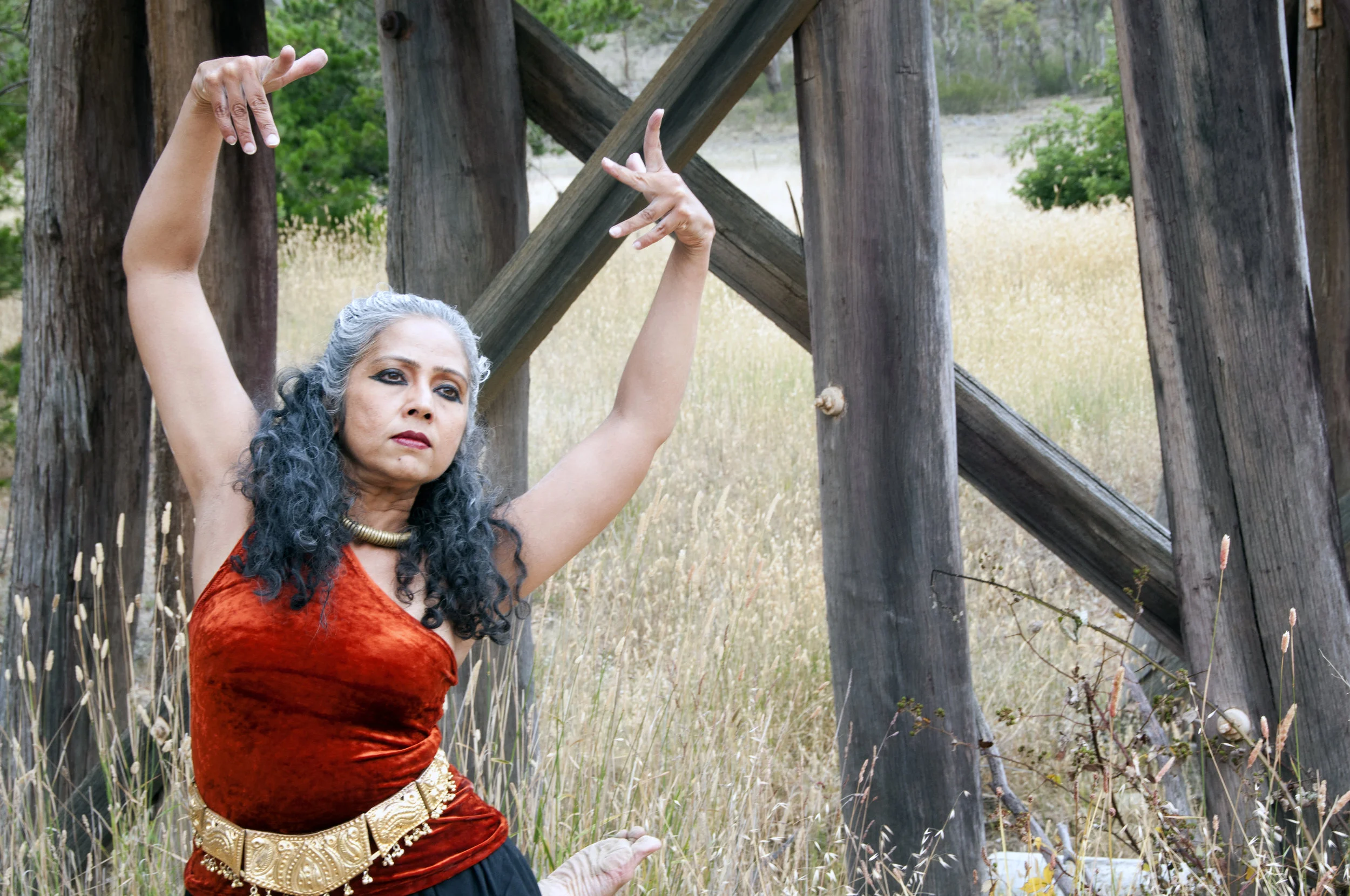Karanas—a practice celebrating mystery and ambivalence
Image: Barbie Robinson
In recent times, approaches to embodied traditions have increasingly become aligned to the ways in which we approach textual discourses. This means that we expect that they will yield to definitions and a certain stability of meaning and understanding. What if the very purpose of embodied ritual traditions were to create interactions of ambiguity and mystery?
Karanas are described in the fourth chapter of the Natya Sastra (1st century BCE to 3rd century CE), the seminal text on Indian dance theatre. It has long baffled dancers and scholars both in the ambiguity of the description as well as the positioning of the chapter which comes before the detailed descriptions of the various components of the practice. Karanas have largely eluded a definitive interpretation and different dancers have come up with varying understanding of its significance and form.
According to the Natya Sastra, Karanas are sourced from the God of Dance, Siva himself. He asks Tandu, one of his followers, to teach them to the sages who were the first ordained practitioners of dance. He says that the purpose of the Karanas was to make dramatic performance ‘citra’ which in Sanskrit could mean simply ‘variegated’ or ‘painting’. Interestingly in Yoga philosophy there is the ‘chitrini’ naadi or channel which is one of the subtlest channels within for the awakening of transformative insights.
The word ‘Karana’ comes from the Sanskrit root ‘krn’ which means doing, causing, being the doer and the like. It denotes an essential impetus, the heart of initiation and the central act of a practice. My approach has been to accept the ambiguity of Karanas on all levels. I find the commentary of the 10th century philosopher and aesthetician, Abhinavagupta, particularly insightful in this context. For Abhinavagupta, Karanas were spaces that suggested the state of being with which we approach the practice of dance in this tradition. This state of being, he suggests, is one of playful surrender to whatever it is that the Karanas reveal to us in the moment. While some dancers have interpreted Karanas as dance devoid of emotion, Abhinavagupta suggests that each Karana holds emotional content (not narrative content) and this is only learnt through guided experience of the Karanas.
Abhinavagupta’s commentary proposes that Karanas are ‘dwelling places’, that we find a home in each of them through our practice and through this they open up to reveal the secrets of their feeling constellations. This is aligned to the contemplative approach in Indian philosophy where we are invited to approach without any expectations, open to mystery and make our homes in places of no form and no definition. This is freedom, moksha or liberation and Karanas are gems of practice that offer symbolic, feelingful, embodied spaces of wonder and discovery.

